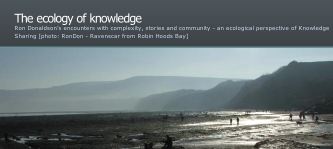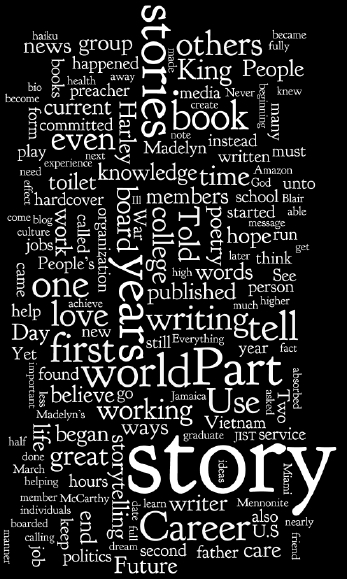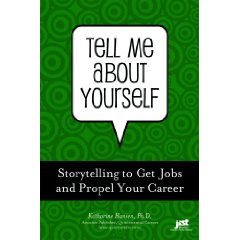Harley King is my new friend and a recent commenter to A Storied Career. He shared with me his wonderful career story, which appeared in the alumni magazine of his college, Goshen College. Though Harley is a few years older than I am, I remember many of the landmark events he talks about — the pivotal 1968 election, the Poor People’s March.
I love helping to tell people’s career stories and would love to tell more. Here’s Harley’s:
What do I want to be when I grow up? Or how I found myself!
By Harley King ’71
When I graduated from GC with a degree in English, I had some vague ideas about being a writer but fewer ideas about how to make my dream a reality. My college years were challenging — largely because of political distractions outside my studies.
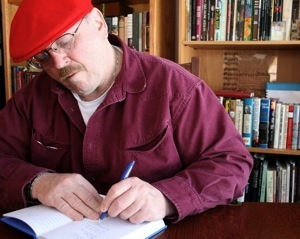
My first year, I flunked German because I was more concerned about fighting racism and protesting the Vietnam War and rarely attended class. In January 1968, the beginning of my second semester, I walked through Arlington National Cemetery with the Rev. Martin Luther King Jr. and hundreds of others to protest military action in Vietnam. I turned 19 the day King was shot outside his hotel room in Memphis and the streets in our cities burned.
I also went “Clean for Gene” and shaved my beard. My father worried I was campaigning for the infamous Joe McCarthy who held the anti-communist hearings in Washington, D.C., but I laughed, because I only knew the liberal Democrat, Eugene McCarthy from Minnesota, who had pledged to end the war.  I cheered when Lyndon Johnson chose not to run for a second term, booed when Bobby Kennedy tossed his hat into the ring and was shocked when he, too, was killed.
I cheered when Lyndon Johnson chose not to run for a second term, booed when Bobby Kennedy tossed his hat into the ring and was shocked when he, too, was killed.
In June 1968, my friend Dean and I boarded a bus in Peoria, Ill., to go to the nation’s capital for the Poor People’s March.  Not fully understanding what we were doing, we saw ourselves as part of that Mennonite protest heritage dating back to the Protestant Reformation. We had been raised to believe that it was more important to die a martyr for one’s faith than to violate one’s principles.
Not fully understanding what we were doing, we saw ourselves as part of that Mennonite protest heritage dating back to the Protestant Reformation. We had been raised to believe that it was more important to die a martyr for one’s faith than to violate one’s principles.
Salvation came in the form of Study-Service Term. If I had stayed in the U.S., I am sure I would have been pulled deeper into the radical politics of the time. But instead, I boarded a plane in Miami and flew to Kingston, Jamaica, with S.A. Yoder and a group of students not nearly as radical as I had been.
Slowly, U.S. politics became less important. We did not watch the 6 o’clock news or read the newspaper. Instead, we discovered a culture that had been heavily influenced by Britain — even driving on the “wrong” side of the road! I fell in love with Jamaica and suffered culture shock when I returned to the U.S. a short 13 weeks later.
SST was a pivotal point in my college career. Instead of dropping out of school to save the world, I focused most of my attention on my studies, with occasional excursions into politics. I sought redemption in the creative spirit. I wrote poetry and gave readings, edited literary journals and Pinchpenny Press, had the role of Zeus in the Greek play, “Trojan Women,” and absorbed the genius of Nick Lindsay. I even found reason to hope for a better world in the summer of 1969, walking across campus with my first love while Neil Armstrong took a “giant leap for mankind” onto the moon.
I was the first in my parents’ families to graduate from college. I had outgrown the farm, but where did I belong? Poets were not in high demand, and neither was anybody else. In the midst of a recession, there were few jobs to be found. The war in Vietnam was still going full throttle. Even though I was in no immediate danger of being drafted, I began voluntary service at Miami Valley Hospital in Dayton, Ohio. I was no closer to achieving my dream of being a writer — I was an orderly on a psychiatric unit.
Two years later I was married, and my wife encouraged me to go to graduate school to study theater after I enjoyed directing the play, “Christ in the Concrete City,” for Metamora (Ill.) Mennonite Church. With the carpentry experience gained by working with my father, I secured a position building stage sets for summer-theater at Illinois State University and earned 12 hours of credit. By the end of the second semester, I had run out of money. Even with two part-time jobs working more than 40 hours, I was still unable to pay the bills.
Then, the miraculous happened: a nursing home company offered me a job writing policy and procedural manuals. Almost four years after graduating, I started my first job as a writer. True, I was not writing the Great American Novel or powerful, romantic poetry, but I was being paid to play with words.
My starting salary was less per hour than what my father had paid me as a carpenter, but I was writing.
Today, I can say I spent my life as a writer — a person who understands and believes in the power of words. After taking the position in 1975, I began writing haiku poetry, a Japanese art popular around the world. 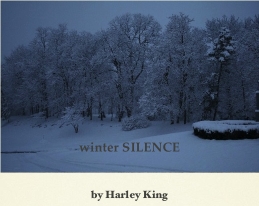 During a seven-year period I published more than 200 haiku in 24 magazines and two books, Winter Silence and Empty Playground. In 1982 I created a seven-line poetic form which I still write in today. In 1985 I started writing short stories, with 100 written to date. My wife and I co-authored a nonfiction book on pet loss — we published It’s Okay to Cry in 1998 and it has outsold my poetry books 10 to one.
During a seven-year period I published more than 200 haiku in 24 magazines and two books, Winter Silence and Empty Playground. In 1982 I created a seven-line poetic form which I still write in today. In 1985 I started writing short stories, with 100 written to date. My wife and I co-authored a nonfiction book on pet loss — we published It’s Okay to Cry in 1998 and it has outsold my poetry books 10 to one. 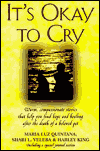 I also authored The World of Speaking, a collection of interviews with professional speakers. I’m not famous and I’m not rich, but I spent countless hours working on something I love. And I’ve had to support my writing habit by working in the corporate world.
I also authored The World of Speaking, a collection of interviews with professional speakers. I’m not famous and I’m not rich, but I spent countless hours working on something I love. And I’ve had to support my writing habit by working in the corporate world.
I believe that ultimately we do in life what we are meant to do. We may try to escape our destiny — to run away, as Jonah did, from what God wants us to do.  I committed to becoming a minister when I was a sophomore in high school. By the time I was a senior, I was searching for answers — I ran away from being a preacher. Yet for the last 13 years I have been a professional speaker, averaging over 225 presentations a year during the past seven years. People will come up to me after a speech and tell me that I have missed my calling — that I should have been a preacher. I think to myself, “I am a preacher.” My message, very simply, is, “Do unto others as you would have them do unto you.” I reach thousands with that message, striving to plant seeds of hope in the hearts of others.
I committed to becoming a minister when I was a sophomore in high school. By the time I was a senior, I was searching for answers — I ran away from being a preacher. Yet for the last 13 years I have been a professional speaker, averaging over 225 presentations a year during the past seven years. People will come up to me after a speech and tell me that I have missed my calling — that I should have been a preacher. I think to myself, “I am a preacher.” My message, very simply, is, “Do unto others as you would have them do unto you.” I reach thousands with that message, striving to plant seeds of hope in the hearts of others.
Everything in my life has come full circle. I have become what I dreamed. God gives unto us when we are ready to receive, and does not give us dreams we cannot achieve. Service to others was part of the teaching I grew up with and was at the heart of my SST experience. While I took time accepting my path, desiring something more glamorous than health care, it has given me everything I wanted and more: it is a privilege to help others in their time of need.
Sometimes we fight who we are, struggling against ourselves and our natures. But we must learn to accept who we are and appreciate who we become. We must love ourselves for what and who we are, and believe in our talents.
Over 25 years, Harley King has published five books and more than 30 articles and written more than 2,000 poems. He has been speaking professionally for nearly 15 years, primarily addressing health care professionals on such topics as leadership and customer service. He can be reached at hgking@sbcglobal.net.
